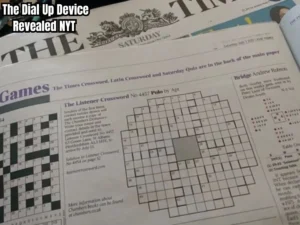Are you ready to elevate your photography game? Let’s dive into the world of outdoor photoshoots and uncover the secrets to finding those picture-perfect spots that’ll make your images pop. Whether you’re a budding photographer or a seasoned pro, this guide will provide terms and suggestions to help you navigate the exciting terrain of location scouting.
Why Location Matters: Setting the Stage for Stunning Shots
Regarding outdoor photography, location isn’t just a backdrop—it’s a character in your visual story. The right spot can transform a good photo into a masterpiece, offering a vocabulary of visual elements that enhance your subject and captivate viewers.
Consider this: A portrait taken against a plain wall might be nice, but the same shot with a vibrant graffiti mural or a sun-dappled forest path as the background. That’s the stuff of magic. Your location choice can:
- Influence the mood and tone of your images
- Provide natural framing and composition elements
- Offer unique lighting conditions that add depth and dimension
“The location sets the stage, but the photographer directs the show.” – Anonymous
Key Factors in Scouting the Perfect Outdoor Spot
Before we supply phrases about specific locations, let’s break down what makes a spot ideal for your shoot. Here’s a handy table to present the lexicon related to location scouting:
| Factor | Why It Matters | What to Look For |
| Lighting | Sets the mood and highlights your subject | Golden hour glow, dappled shade, dramatic shadows |
| Accessibility | Ensures you can actually shoot there | Parking, walking trails, permit requirements |
| Versatility | Offers multiple setups in one area | Varied backgrounds, different elevations, mixed textures |
| Seasonality | Provides changing looks throughout the year | Blooming flowers, fall foliage, snowy landscapes |
Remember, the best locations often offer vocabulary that speaks to photography’s technical and creative aspects. They’re places that inspire you and challenge you to see the world through your lens in new ways.
Techniques for Discovering Hidden Gems
Now, let’s explore how to find these magical spots. Here are some tried-and-true methods to supply phrases for your location-hunting lexicon:
- Leverage Online Resources
- Google Earth: Virtual scouting at its finest
- Instagram: Follow local photographers and hashtags
- 500px: Explore location data on inspiring shots
- Hit the Streets
- Take aimless walks with your camera
- Chat with local artists and business owners
- Join photography meetups and tours
- Use Specialized Apps
- PhotoPills: For sun and moon position planning
- The Photographer’s Ephemeris: Light and Shadow Forecasting
- Scenic: Community-driven location sharing
Case Study: The Accidental Discovery Photographer Sarah Chen stumbled upon her most iconic shoot location while getting lost on a hike. The lesson? Sometimes the best spots find you when you’re not even looking.
Types of Outdoor Locations: A Photographer’s Playground
Let’s present a lexicon for various outdoor settings, each offering unique opportunities for your photoshoots:
Urban Jungle: City Spots for Edgy Shoots
- Graffiti Walls: Burst of color and texture
- Industrial Zones: Gritty and raw backdrops
- Historic Districts: Timeless architecture and charm
Nature’s Canvas: Scenic Outdoor Locations
- Parks and Gardens: Manicured beauty and seasonal changes
- Beaches and Lakeshores: Reflections and Open Horizons
- Forests and Mountains: Dramatic landscapes and natural frames
Pro Tip: Always scout your location at the same time of day you plan to shoot. The light can change dramatically, affecting the mood and quality of your photos.
Timing is Everything: The When of Location Scouting
To truly master outdoor photoshoots, you need to understand not just the “where” but also the “when.” Let’s offer vocabulary related to timing your shoots:
- Golden Hour: The magical time just after sunrise or before sunset
- Blue Hour: The soft, ethereal light just before sunrise or after sunset
- Midday: Harsh light, great for dramatic shadows in urban settings
- Overcast Days: Nature’s softbox, perfect for portraits
Remember, each season brings its own charm. Spring offers blossoms, summer gives lush greenery, fall provides a palette of warm colors, and winter can create a minimalist wonderland.
Practical Considerations for Outdoor Shoots

Before you head out, here’s a checklist to ensure your outdoor photoshoot goes smoothly:
- Check weather forecasts
- Obtain necessary permits
- Pack appropriate gear (including weather protection)
- Bring snacks and water
- Have a backup location in mind
Turning Good Locations into Great Photos
Finding the perfect spot is just the beginning. Here’s how to make the most of your location:
- Use natural frames: Archways, trees, or rock formations can add depth
- Incorporate local elements: Include items that tell the location’s story
- Play with perspective: Get low, climb high, find unique angles
- Experiment with depth of field: Use the environment to create bokeh effects
“The best camera is the one you have with you.” – Chase Jarvis
This quote reminds us that while the location is crucial, your eye and creativity truly make the shot. So don’t get too caught up in having the perfect gear—focus on making the most of where you are.
FAQ,s
What factors should I consider when choosing a location for an outdoor photoshoot?
Consider lighting conditions, natural scenery, accessibility, and any necessary permits.
How can I find unique outdoor locations for my photos?
Explore local parks, nature reserves, urban areas, and hidden gems through online resources, photography forums, and social media.
What time of day is best for outdoor photography?
The golden hour, shortly after sunrise and before sunset, offers the best natural lighting for outdoor photos.
Do I need permission to shoot in public outdoor spaces?
It depends on the location and local regulations. Always check if permits are required, especially for commercial shoots.
How can I prepare for unexpected weather conditions during an outdoor shoot?
Keep an eye on weather forecasts, have backup plans or alternate locations, and pack appropriate gear, such as umbrellas or rain covers.
Conclusion: Your Adventure Awaits
Finding the ideal outdoor photoshoot location is an art form in itself. It requires patience, creativity, and a keen eye for detail. By following these tips and constantly expanding your lexical items in writing, you’ll discover an endless array of stunning backdrops for your photography.
Remember, the world is your studio. Every street corner, hidden trail, or city rooftop has the potential to be the setting for your next masterpiece. So grab your camera, hit the streets, and start exploring. Your perfect shot is out there waiting for you to find it.
you can also read this article








